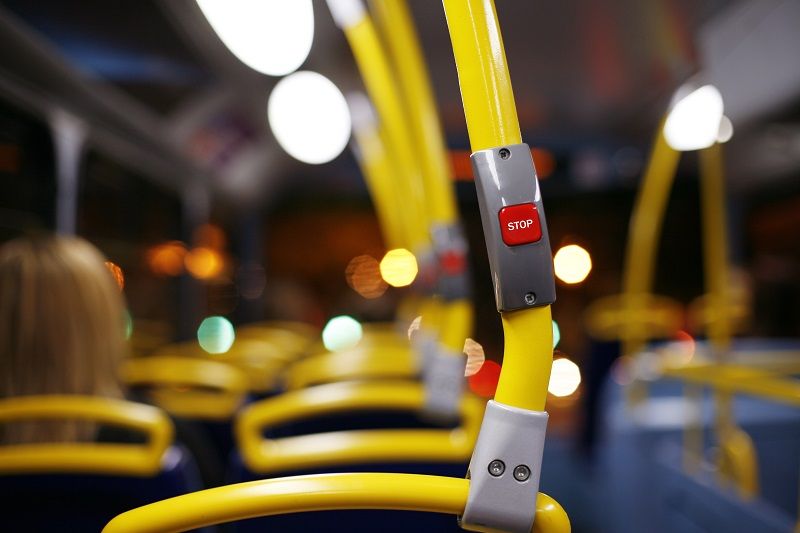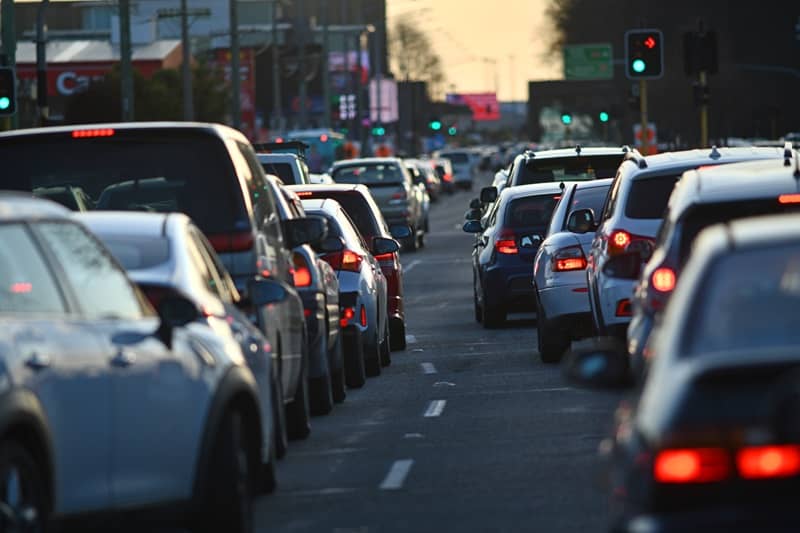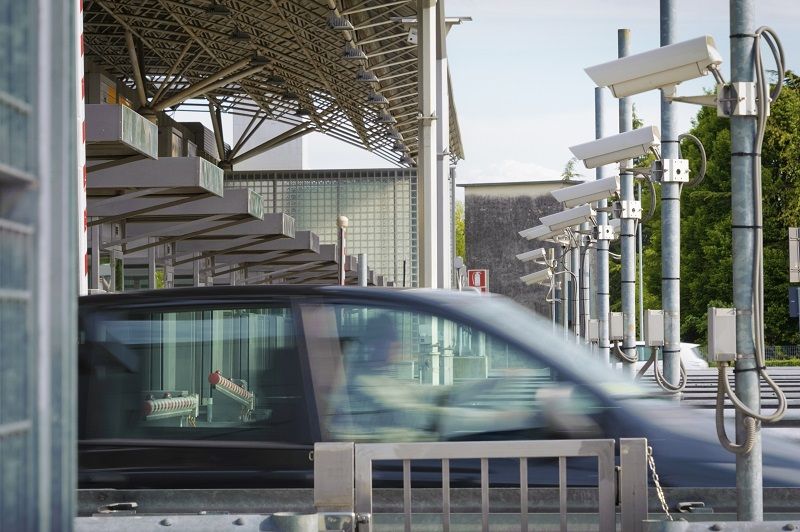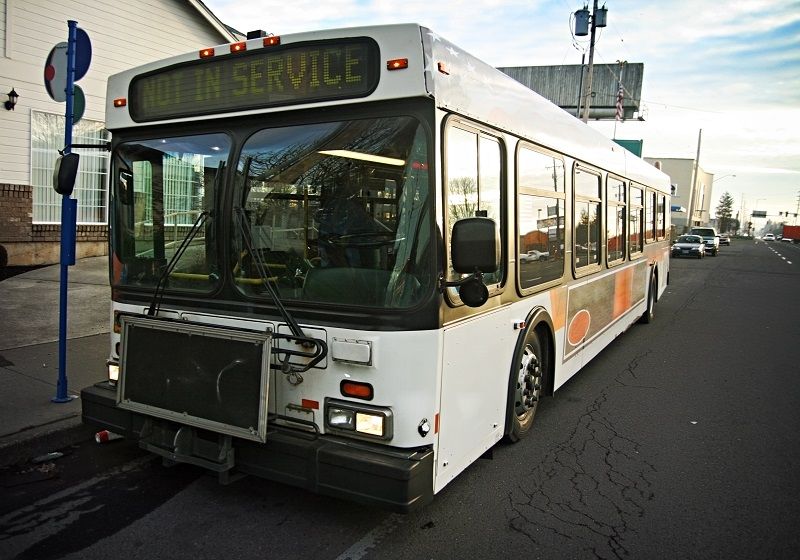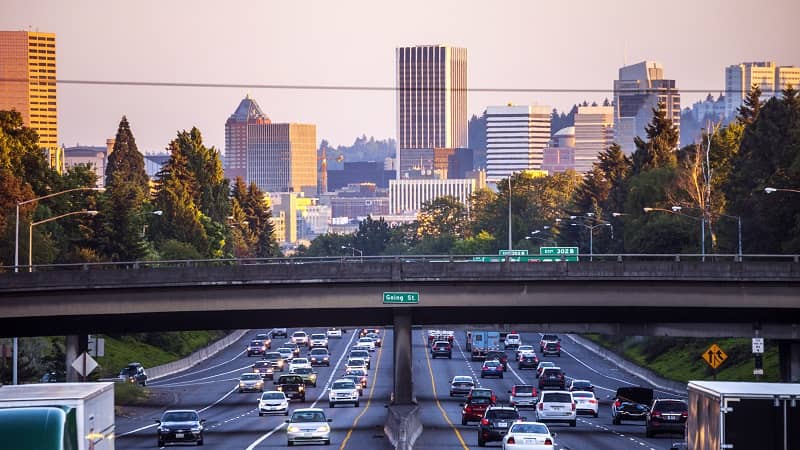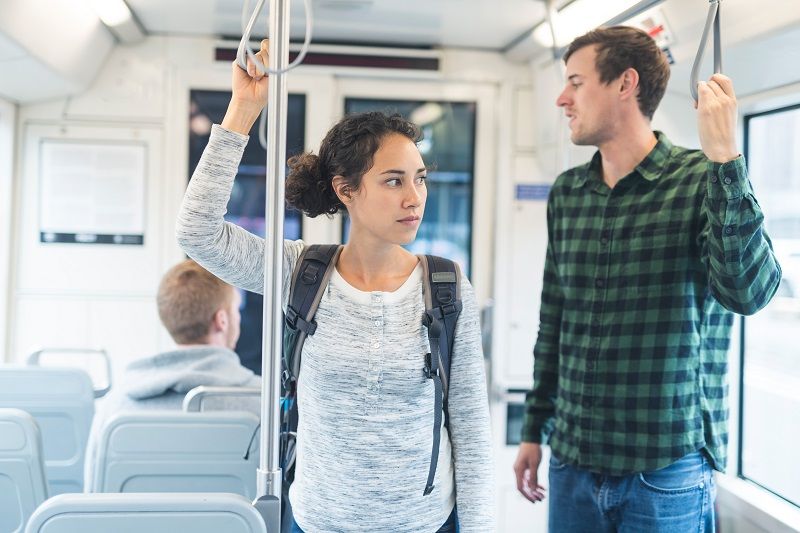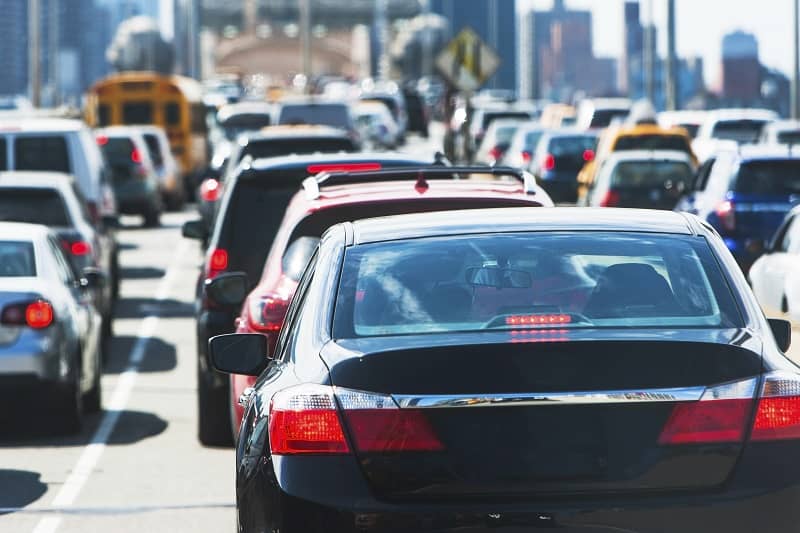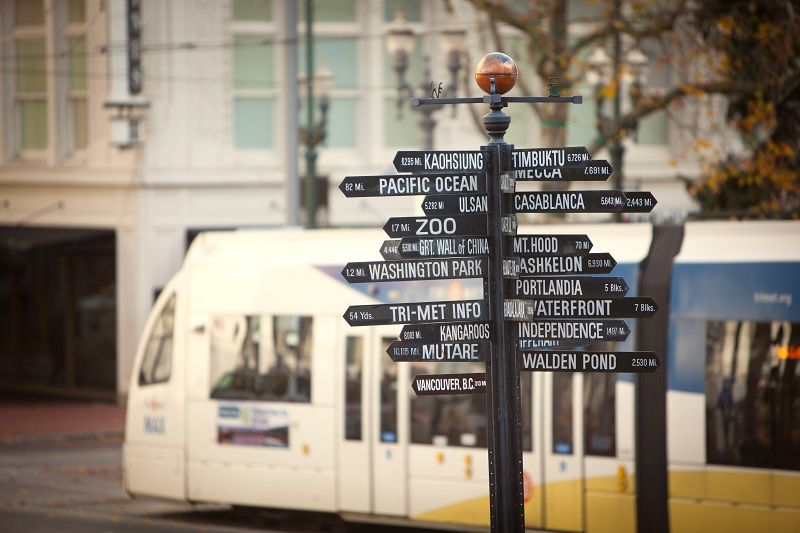At the July 14, 2011 JPACT meeting, accusations were made about John Charles and the Cascade Policy Institute. The response from John is below.
Dear Mayor Adams:
I am writing regarding the public criticism you made of Cascade Policy Institute at the July 14 JPACT meeting. I recently listened to an audio recording of the entire meeting.
You twice referred to an essay of mine about Milwaukie light rail as a “screed.” You also said, as a follow-up to Councilor Burkholder’s earlier attack on me: “The forces to erode the foundation of objective analysis that we all seek to rely on are real. We’re under attack. Basic, impartial information is under attack. I’d like that group [a JPACT subcommittee to be formed in the future] to figure out how we’re under attack and what we can do to make sure that objective information is out there. I worry that we’ll come out with ideas that will just sort of sink for failing to sit on firm, objective soil. “
As the CEO of a policy research center, I share your interest in empirical evidence and data. Therefore I offer the following specific concerns about the Portland-Milwaukie light rail (PMLR) project, and invite you to respond to them in a factual manner:
- The Milwaukie-to-Portland corridor is already well-served by TriMet. There are nine buses stopping at the Milwaukie Transit Center, and five of them specifically travel on McLoughlin Boulevard to Portland city center via the Hawthorne Bridge. Of the five, three are local bus routes (31, 32, and 33), one is an express bus (#99), and one is a hybrid – the #30 originating in Estacada continues on to Portland for six runs in the morning peak, where it becomes known as the 31E or the 31L. Both offer types of express service to Portland city center from Milwaukie.
According to the published FEIS for this project, once light rail opens, all of these buses “would no longer provide service north of Milwaukie.”[1] Transit customers boarding buses from points south will be forced to transfer at Milwaukie to a slow train with limited seating capacity. This is a degradation of service for them, not an improvement.
The ostensible goal of this project is to provide improved transit. Why are you planning to spend $1.5 billion on a train line that will clearly make thousands of current TriMet customers worse off than they are today?
- The current scheduled time-of-travel for a trip from downtown Milwaukie to PSU on the #99 McLoughlin Express bus averages 17.5 minutes. An early morning run makes it in only 12 minutes. The forecasted time of travel for light rail – which offers no express service — is roughly 19 minutes for the same distance.[2]
Why are you planning to spend $1.5 billion in tax dollars to offer slower service than we already have for peak-hour transit commuters?
- The current scheduled time-of-travel for a trip from downtown Milwaukie to PSU on the #33 McLoughlin Boulevard local bus averages 19.8 minutes, with a range of 18-22 minutes. Both the #33 and the planned light rail line offer all-day local service at roughly the same speed, to the same neighborhoods, except that light rail will have fewer stops so it will serve fewer neighborhoods.
Why are you planning to spend $1.5 billion in tax dollars to offer local service that already exists?
- Average daily traffic on McLoughlin Boulevard is 46,000 vehicles.[3] This is not a particularly high traffic load. In comparison, the ADT on the Sellwood Bridge is approximately 30,000 vehicles, and that is a two lane bridge. McLoughlin Boulevard has four lanes for its entire length, and six lanes in some places.
In the key stretch that could be a potential traffic choke point – the subarea of Powell Blvd. to Tacoma Street, which is mostly two lanes in each direction – all McLoughlin Boulevard intersections except one meet current jurisdictional criteria for acceptable levels of service.[4]
This is precisely the reason why current bus service is a success. The widely-promoted assertion that McLoughlin Boulevard is gridlocked (and thus in need of the exclusive ROW that rail transit would provide) is a myth.
This point was made anecdotally in yesterday’s Sunday Oregonian in a feature story in the Homes and Rentals section, which highlighted a new, 18-unit subdivision of “small footprint” homes in Milwaukie. Developer Nick Stearns says, “I think Milwaukie is kind of a secret because commuting from almost any other city in the area takes much longer to get to and from downtown Portland. I’ve come down here at 5:00 p.m. right at rush hour and it was 11 minutes from downtown.”
A recent home buyer there, Sam Salstrand, echoes that observation: “I work six days a week, and the commute was just killing me. This place is great because there’s an express bus, and it’s incredible!”
I wonder if Mr. Salstrand is aware that his wonderful express bus will be terminated in 4 years because you and other members of JPACT think he would be better off with a slow train?
- According to TriMet’s official “Fact Sheet” for this project, the opening of light rail service will mean 110 bus trips on the downtown transit mall will be removed. This is advertised as a “benefit.”
But to the thousands of transit customers who currently get off in city center, being forced to take a slow train that only goes to the south end of the PSU campus is highly inconvenient. For most of them, the re-routing will likely require a transfer to the Green line or a bus to get further north in city center.
Why are you planning to spend $1.5 billion to force the majority of current Milwaukie-Portland transit customers to get off at a college campus, when most of them are probably not college students?
- TriMet estimates in its December 2010 long-range financial forecast that in the opening year of 2015, the Milwaukie line will carry an average of 13,000 weekday “boardings.”[5] Of those, 4,500 will be former bus rides diverted to light rail.[6] Since each rider typically makes two “boardings” per day, the number of actual new transit customers will be around 4,250. So in construction costs alone, this project will cost more than $352,941 per new rider.
Why are you planning to spend $1.5 billion just to recruit 4,250 hoped-for new transit customers, when none of them will pay even one dime in direct user fees for the construction of this project? How is that a sustainable business model for transit?
Concerns about the new bridge
The new bridge is being advertised as a “transitway.” Unfortunately, the actual vehicle or passenger throughput of the bridge will be tiny, especially compared with real transitways operating elsewhere.
When the project opens in 2015, the bridge will carry six light rail trains at the peak hour plus bus service for three TriMet buses currently operating on the Ross Island Bridge (lines 9, 17 and 19). Those lines cross the Ross Island 16 times per hour (total) at the morning peak. So the total transit throughput on the new bridge will be 22 vehicles per hour at the peak (roughly equivalent to 28 buses).
The highest-volume transitway in the country is the Lincoln Tunnel Express Bus Lane (XBL) traveling from the New Jersey Turnpike into mid-town Manhattan. During the 3.75 hours the busway operates in the morning weekday peak, it carries roughly 62,000 passengers on 1,700 buses, or 453 buses per hour. So in comparison, the new PMLR bridge will carry only 6.2% of the vehicular throughput that the XBL carries per hour.
Moreover, because the XBL is a busway, not a rail line, it is flexible. Thus, at off-peak hours, it operates as a general purpose lane that can run in either direction, serving all manner of trucks, buses and cars.
It is fine that the new PMLR bridge will have excellent access for pedestrians and cyclists, but the exclusive use of the primary ROW for one light rail line and three buses is a gross misallocation of capital.[7]
Servicing the South Waterfront District
Among other things, the PMLR project is being promoted as a way to provide an eastern portal for the South Waterfront district. While it’s true that South Waterfront desperately needs additional options for people traveling there, currently 79% of all weekday person-trips to/from the district are made by private automobile (see below), not transit.
Trip Counts for the South Waterfront District
Average Weekday, 6:00 a.m. – 10:00 p.m.
| All passenger-trips | Market share of trips by mode | |
| Auto/truck | 17,023 | 79% |
| Streetcar | 1,832 | 9% |
| Bicycle | 1,076 | 5% |
| Bus | 926 | 4% |
| Pedestrian | 642 | 3% |
Note: Research was conducted on various good-weather weekdays during the months of May-January, 2010-2011.
We know these are the travel patterns because last year we laboriously counted every trip to and from the district by the hour (including observed vehicle occupancies) to learn how the district actually works. Contrary to assertions made by local planners, the South Waterfront is primarily auto-based, including (and especially) the OHSU Health and Healing Center.
Since every downtown bridge is currently over capacity at the peak period, why are we building a new Willamette River bridge that will specifically exclude the dominant mode of travel both in the South Waterfront district and everywhere else?
PMLR as a means of promoting “Transit-Oriented Development”
PMLR is also touted as a so-called “catalyst for transit-oriented development.” If you actually believe the claims being made by planners, please give me examples of current light rail stations that serve as models for what you have in mind. Are there any on the Green Line, which is dominated by empty park-and-rides? Are there any in the 25-year-old Blue Line to Gresham? I assume you are not thinking of Rockwood Station, Ruby Junction, Gresham Station, 122nd street, Gateway, 82nd Avenue, or the Rose Quarter.
My own field research over the past decade shows that rail stations, usually funded in part with urban renewal dollars that are statutorily restricted to improving “blight”, usually create blight. If I’m wrong, please provide empirical examples of what you would consider “rail station success stories” on the east side.
Conclusion and Recommendation
I recognize that you are a passionate believer in the PMLR project. Unfortunately, you have been badly advised by the people who are supposed to know something about transit. Milwaukie light rail is destined to be the most wasteful transit project in Oregon history.
Fortunately, there is still a reasonable alternative: build the new bridge (which is needed anyway), but cancel the light rail project. TriMet is about 10 months away from having a signed FFGA with FTA, and the project may not even be approved by FTA due to events now taking place in Congress related to the budget.
The changing political climate in Washington, D. C. is actually your last lifeline to fiscal sanity. If you take it, you can preserve the existing high-quality bus transit service from Milwaukie to Portland, and spend the $750 million in committed local matching funds on dozens of other more important infrastructure projects, such as the Sellwood Bridge replacement.
It is not too late to make this change. We terminated the Mt. Hood Freeway at the last minute, and we can do it again with this project. All that’s necessary is a commitment to assessing the actual facts.
Sincerely,
John A. Charles, Jr.
President & CEO
[1] Portland-Milwaukie Light Rail Project FEIS, October 2010, p. 2-29
[2] Ibid, p. 2-28; TriMet bus schedules as of July 25, www.trimet.org.
[3] Portland-Milwaukie light rail project, Transportation Impact Results Report, October 2010, p. 4-12.
[4] Ibid, p. 4-12
[5] TriMet, Fall 2010 Financial Forecast, p. 52
[6] Ibid
[7] Note that the Portland streetcar is also expected to run on the bridge, but that will have to happen through a separate project; it is not part of the PMLR project.
